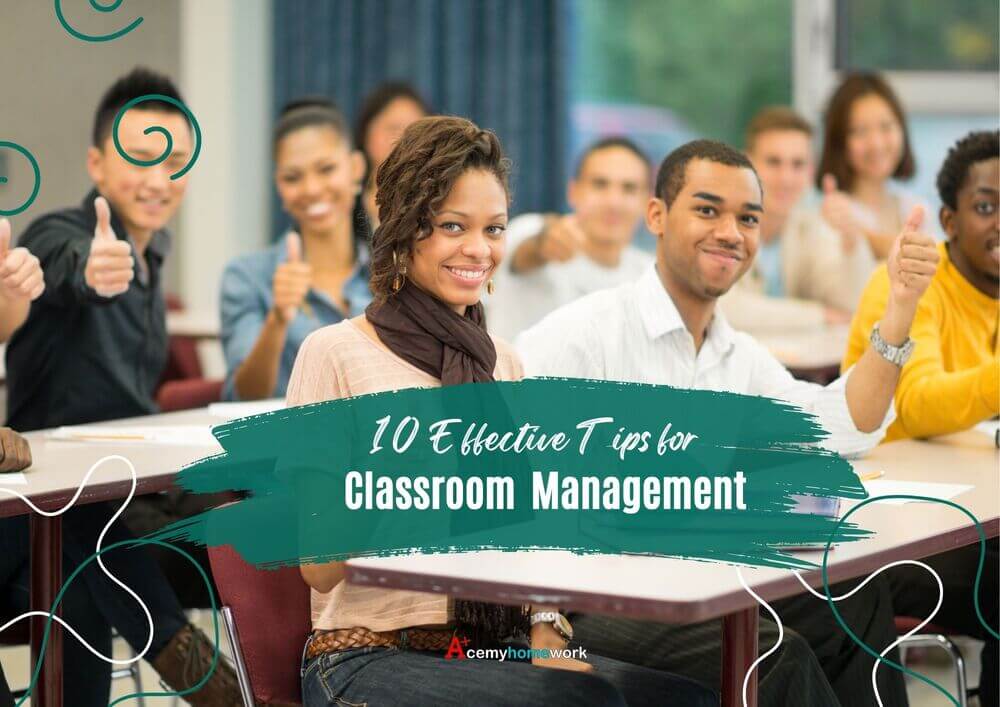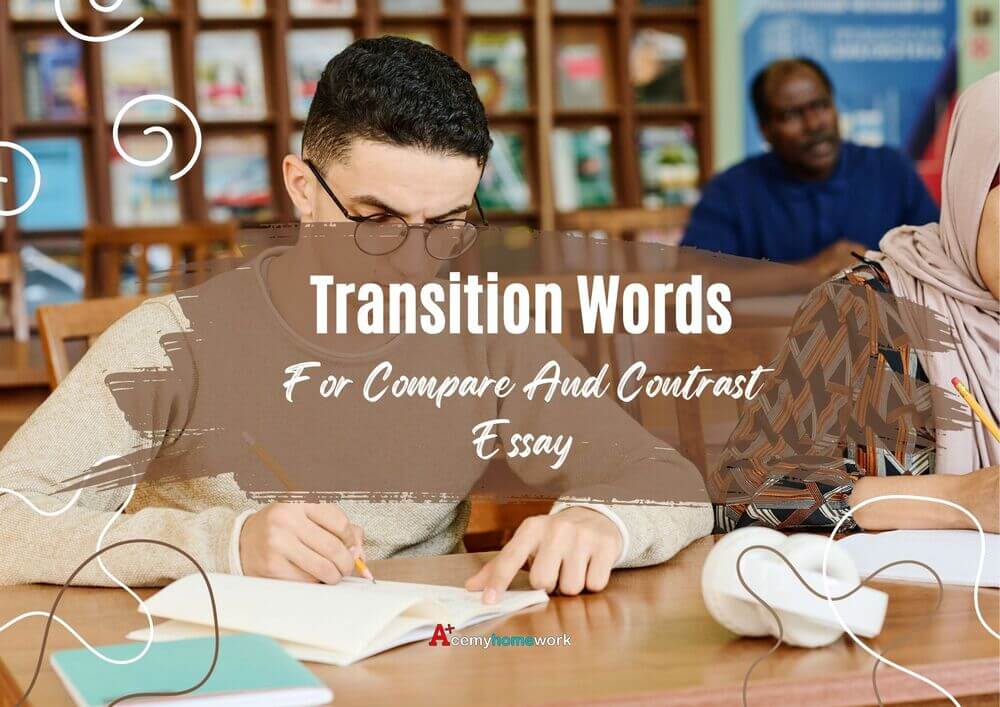Creating a conducive and positive studying environment is crucial for the success of any student. Effective classroom management ensures students achieve their specific goals. Educators play a significant role by setting strategies to enhance student’s positive behaviors and academic development.
Good behaviors and performances are enhanced by effective classroom management strategies. Thus, this article provides 10 comprehensive universal strategies that enhance class management for teachers and their students.
What is a Well-Managed Classroom?
A proper and well-managed classroom has clear rules and expectations. The laws foster a positive culture and strong relationships. The teacher develops consistent teaching strategies that create a conducive environment through collaborative projects.
On the other hand, students actively participate and showcase their mutual respect and positive behaviors. Hence, a well-managed classroom has organized students, a goal-oriented teacher, and parents who are always ready to be involved in the development of their kids. Now let’s dive into the 10 essential tips for effective classroom management.
10 Ways to Achieve Effective Classroom Management
Building rapport with pupils is the cornerstone of effective classroom management. You can maintain your classroom functioning like a smoothly running machine by establishing healthy policies that support positive connections between students and teachers. More tips on how to manage a classroom efficiently are outlined below;
# Tip 1: Develop and Enhance a Consistent Teaching Style
Effective classroom management is realized by maintaining a consistent teaching methodology. It involves stabilizing the students' ability and success. A consistent teaching style includes proper lesson presentations, addressing disruptions, and time management in teaching. Students are better equipped with the learning process by comprehending the expectations and routines.
Educators provide students with a clear roadmap and enhance their confidence. Students can also understand the requirements and consequences of their behaviors in an established framework. This makes it easy for their teacher to manage them effectively.
# Tip 2: Implement a Universal Classroom Management Technique
It involves employing techniques that go beyond individual differences which are effective to a huge population of students. Proactive behavior management involves controlling potential issues among students and implementing preventive measures. Educators develop an engaging student environment by reinforcing positive behaviors.
Universal classroom management strategies ensure positive reinforcement where desirable behaviors are acknowledged. It motivates students to adhere to established norms through recognition when they make an impact in their academics. This creates a more interactive and desirable learning atmosphere.
# Tip 3: Build a Positive Relationship with Students
A positive relationship in learning is essential for easy and effective classroom management. It involves establishing a proper and strong connection based on respect and trust between students and their teachers. Students create a foundation for a positive studying environment when they feel respected and valued.
Positive relationship makes it easier for teachers to identify and correct bad behaviors. Students will likely follow the required guidelines when they feel that their teacher cares about their well-being. A good connection creates a sense of belonging and security relevant to student learning.
# Tip 4: Use Student Engagement Strategies
Effective student engagement strategies create a focused and interactive classroom environment. Teachers can actively involve their students in classroom management through group activities, hands-on projects, and interactive teaching tools. Group activities encourage students to easily solve problems by collaborating to share ideas.
Interactive teaching tools and hands-on projects provide tangible and captivate students' attention in learning. Students are unlikely to display disruptive behaviors when they invest their time in personal and group learning. Their focus on the ideal learning and participation in classroom activities creates a constructive classroom atmosphere. Thus, teachers make students emotionally invest in their learning journey by employing engagement strategies.
# Tip 5: Encourage a Collaborative Learning Environment
Enhancing a collaborative learning environment is an ideal strategy for creating a positive community within the classroom. Students gain a deeper understanding of the concept by actively participating in group work and interactive projects. Group work encourages students to share ideas, tackle challenges, and come up with feasible solutions. It also creates a sense of community emphasizing the significance of teamwork and collaboration.
The collaboration creates a culture of mutual support that influences overall classroom dynamics. Students ensure a positive relationship and behavior by learning to appreciate each other’s contributions. Teamwork instills accountability and a collective achievement contributing to effective classroom management.
# Tip 6: Implement Workable Classroom Management Style
Effective classroom management techniques create a positive and conducive learning environment. Different strategies include proactive intervention, conflict resolution, redirection, and maintaining a conducive environment for students. The application of these comprehensive strategies enhances a smooth relationship between teachers and students.
Proactive intervention is evident in realizing potential challenges and seeking preventive measures. On the other hand, redirection tactics allow teachers to guide students on more appropriate behaviors when problems arise.
# Tip 7: Develop Strong Classroom Management Skills
Developing solid management skills requires teachers to remain informed about students and their trends and practices. Teachers ensure a conducive learning environment through continuous refinement of the required skills. Actively participating in workshops and in-person interactions helps teachers gain new insights and integrate new teaching methodologies with their students. Also, seeking feedback from other people like administrators and colleagues.
# Tip 8: Establish an Open Communication with Parents
Open communication is an effective strategy for classroom management. Teachers gain ample time to inform parents about the well-being of their kids through open communication. A supportive partnership is created when teachers involve parents in the development of the kids. This fosters good behaviors and academic achievements.
Open communication also allows parents to keep track of their kid’s academic performance. This helps them understand the strengths and weaknesses of their children. This approach is essential in creating a unified network and strengthening a good relationship between school and home.
The teachers can also easily understand the well-being of their kids while at home especially during long holidays.
# Tip 9: Establish Clear Classroom Rules and Expectations
Establishing clear guidelines and standards for the classroom is essential to fostering an atmosphere that supports productive learning. Teachers are essential in setting the tone for a disciplined and well-organized learning environment. This occurs mostly at the beginning of the school year. Clearly defining the rules for the classroom is crucial to establishing a structure that encourages good behavior and high academic standards.
Through explicit communication, teachers guarantee that students comprehend the boundaries that will govern the learning process. Students can concentrate on their studies without distractions which also helps to reduce uncertainty.
# Tip 10: Cultivate a Positive Classroom Culture
Cultivating a positive classroom culture is a transformative endeavor. It involves creating an inclusive and supportive learning environment. This approach encourages positive relationships among students and between the teacher and learners. Educators lay the groundwork for a harmonious and thriving classroom community by fostering connections based on trust, respect, and understanding.
Encouraging positive relationships contributes significantly to enhancing the overall learning experience. When students feel a sense of mutual support, they are more likely to actively participate in class activities, engage in discussions, and collaborate on projects. This positive atmosphere enriches the educational journey and creates a supportive foundation for students to navigate challenges and succeed academically.
How Bad Behavior Affects Classroom Management
Bad behaviors among students can develop from various factors, including unclear expectations, inadequate classroom management, individual learning differences, social challenges, and lack of engagement. Addressing these issues requires proactive measures, clear communication, and personalized support to create a positive and conducive learning environment.
How Does Poor Behavior Develop?
Understanding and addressing bad behavior among students is crucial for maintaining a positive and effective learning environment. Bad behavior can manifest in various forms. These include disruptions in class or serious disciplinary issues. Several factors can contribute to bad behavior among students:
Lack of Clear Expectations
When classroom rules and expectations are not communicated, students may not fully understand the boundaries. Unclear expectations can lead to confusion, and students may engage in behaviors that are deemed inappropriate simply because they are unaware of the established norms.
Poor Classroom Management
Inadequate classroom management strategies can contribute to bad behavior. If teachers are unable to effectively control and guide the class, students may feel a lack of structure, leading to disruptions and challenges in maintaining a positive learning atmosphere.
Individual Learning Differences and Engagement
Students have diverse learning styles and needs. When instructional methods do not cater to these differences, some students may become disengaged, frustrated, or bored, resulting in disruptive behavior as a means of expressing their dissatisfaction.
Students who feel disengaged from the learning process may exhibit bad behavior as a way of seeking attention.
Poor Teacher-student relationship
The absence of positive relationships between teachers and students, as well as among peers, can contribute to bad behavior. Students who do not feel supported or respected may act out as a way of expressing their dissatisfaction or seeking attention.
Mistreating Students with Learning Disabilities
Students with learning disabilities may exhibit challenging behaviors if their unique requirements are not addressed appropriately. Providing targeted support and accommodations can help manage and prevent disruptive conduct.
External Influences
External influences like societal norms, media exposure, and peer dynamics, can significantly impact student behavior. Pressures from these external sources may contribute to negative behaviors that students exhibit within the learning environment, emphasizing the need for educators to understand and address these external factors in managing student conduct effectively.
Ways of Addressing Bad Behaviors among Students
Handling bad behavior in the classroom is a critical aspect of maintaining a positive and conducive learning environment. Implementing effective strategies can help address and mitigate disruptive conduct. Here are ways to handle bad behavior:
Establish Clear Expectations
Establishing clear expectations is fundamental to effective classroom management. Teachers create a structured environment by openly communicating and setting behavioral standards at the start of the school year. Students comprehend the rules and consequences for misbehavior fostering a conducive and orderly learning atmosphere. Clarity in expectations minimizes disruptions and enables a focus on academic engagement.
Ensure Consistent Classroom Management
Consistent classroom management is essential for maintaining a positive learning environment. By implementing fair and uniform strategies, teachers establish a sense of order and predictability. Consistency in enforcing rules and consequences ensures a level playing field, fostering a classroom culture where students understand the expectations and consequences of their actions.
Enhance the Proactive Intervention
Proactive intervention is a preemptive approach to classroom management, involving the anticipation and early addressing of potential issues. Teachers strive to identify and intervene in emerging challenges promptly. This proactive stance helps prevent minor disruptions from evolving into more significant behavioral issues, maintaining a positive and focused learning environment.
Promoting Individualized Support
Individualized support acknowledges the uniqueness of each student, recognizing that bad behavior may stem from individual needs or challenges. Teachers offer personalized assistance, including additional resources, counseling, or accommodations, addressing the specific requirements of each student to foster a supportive learning environment and facilitate positive behavioral development.
Enhance Effective Communication
Effective communication is pivotal in fostering a positive classroom environment. Teachers should establish open lines of communication, encouraging students to express concerns and feelings. By addressing underlying issues through dialogue, educators can build trust and resolve behavioral problems, creating a supportive atmosphere conducive to learning and personal development.
Employ Conflict Resolution Techniques
Conflict resolution techniques empower students with skills to express themselves constructively and peacefully resolve conflicts. By teaching these skills, educators contribute to creating a positive and respectful learning environment. Students equipped with conflict resolution abilities are more likely to manage interpersonal issues positively and collaboratively.
Why Effective Class Management is Important
Classroom management strategies are significantly important for several reasons, encompassing the educational and social aspects of the learning environment. These strategies are crucial in shaping a positive and effective classroom atmosphere, ultimately contributing to student success and overall academic achievement. Here are key reasons for best class management strategies.
Creating a Positive Learning Environment
Effective classroom management strategies contribute to creating a positive and conducive learning environment. This positive atmosphere encourages active student engagement, enthusiasm for learning, and a sense of belonging, all essential for academic success.
Minimizing Disruptions and Challenges
Well-implemented classroom management strategies help minimize disruptions and challenges in the classroom. Clear rules and expectations provide a structured framework that helps prevent disruptive behavior, allowing teachers to maintain focus on delivering quality instruction.
Fostering Positive Relationships
Classroom management efforts especially those focused on positive relationships, build trust and respect between teachers and students. Positive relationships contribute to a supportive classroom culture, enhancing communication and cooperation among all learning community members.
Enhancing Student Engagement
Strategies that promote student engagement, such as interactive teaching tools and collaborative activities, contribute to a dynamic learning experience. Engaged students are more likely to participate actively, stay focused, and develop a genuine interest in the subject matter.
Addressing Challenging Behaviors
Effective classroom management strategies equip teachers with tools to address challenging behaviors proactively and constructively. By understanding and implementing appropriate intervention techniques, educators can create a learning environment that supports both behavioral growth and academic achievement.
Bottom Line
Mastering effective classroom management requires a combination of proactive strategies, consistent teaching techniques, and strong relationships with students. Teachers can easily create a thriving learning environment by incorporating these 10 tips into their teaching approach. Remember, the key lies in building positive relationships, fostering engagement, and continuously refining your classroom management skills to adapt to the ever-changing dynamics of the educational landscape.







